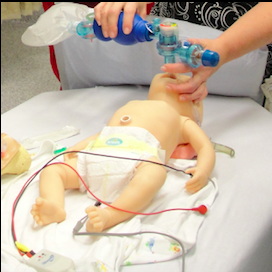
Creativity is the foundation upon which innovation is built. While actively engaging the nurses that I teach with the processes of innovation in the workplace may not be suitable at this time, what about having Registered Nurses that are taking specialty education engage with the processes of creativity? What are the benefits in including creativity in the curriculum? To begin my investigation, I will begin with myself. How do I personally feel about creativity as a frontline nurse? What has been my experience with engaging students with creativity in health care?
First of all I will define what creativity, as applied to this context, means to me.
Creativity: the state in which an individual, with the ability, resources and the inclination to do so, engages in the generation of ideas, concepts and/or physical products that are original in nature and/or application and can be used to solve problems in health care.
As a frontline nurse I am constantly coming up with creative ways to provide individualized care to patients that have a wide range of needs, a behaviour that is typical of nurses (Chan, 2012; Cheraghi et al., 2021). Chan (2012) notes that creative thinking and critical thinking are interrelated skills, both of which are critical for rural nurses who deal with the challenges of providing care in a low resource site. Additionally, “. . . ethical decision making is positively correlated with creative thinking . . .” (Chan, 2012, p. 1).
When working with students, I have found that nurses are very comfortable with suggesting alternative approaches to find ways to make something work. When I work with interdisciplinary teams, the same holds true, and, as there is a team to provide ideas, solutions to problems are often quite comprehensive.
Including creativity into the curriculum looks like it will also benefit patient care through improved problem solving skills and ethical decision making. Research also shows that there are direct improvements to the mental health of people who engage in creativity including:
- An increase in self-esteem and self-confidence (Cheraghi et al., 2021);
- Increased resilience (Davis, 2020, June 16);
- The development of mental flexibility, empathy and openness (Brewster, Lee, Linnander & Curry, 2021, August, 17); and,
- Increased positive emotions (Davis, 2020, June 16).
Creativity is definitely something I need to be engaging students with. See Parts 2 and 3 for a look at the processes of creativity, a summary of the creative behaviours that are part of problem solving and teaching strategies for supporting creative thinking in the classroom.
References
Brewster, A.L., Lee, Y.S.H., Linnander, E. & Curry, L.A. (2021, August, 17). Creativity in problem solving to improve complex health outcomes: Insights from hospitals seeking to improve cardiovascular care. Learning Health Systems. https://onlinelibrary.wiley.com/doi/full/10.1002/lrh2.10283
Chan, Z.C.Y. (2012). A systematic review of creative thinking/creativity in nursing education. Nurse Education Today. http://dx.doi.org/10.1016/j.nedt.2012.09.0
Cheraghi, M. A., Pashaeypoor, S., Mardanian Dehkordi, L. & Khoshkesht, S. (2021). Creativity in nursing care: A Concept analysis. FNJN Florence Nightingale Journal of Nursing, 29(3), 389-396. https://fnjn.org/Content/files/sayilar/211/389-396.pdf
Davis, J. (2020, June 16). How Creativity Builds Resilience in Times of Crisis. Psychology Today. https://www.psychologytoday.com/ca/blog/tracking-wonder/202006/how-creativity-builds-resilience-in-times-crisis
